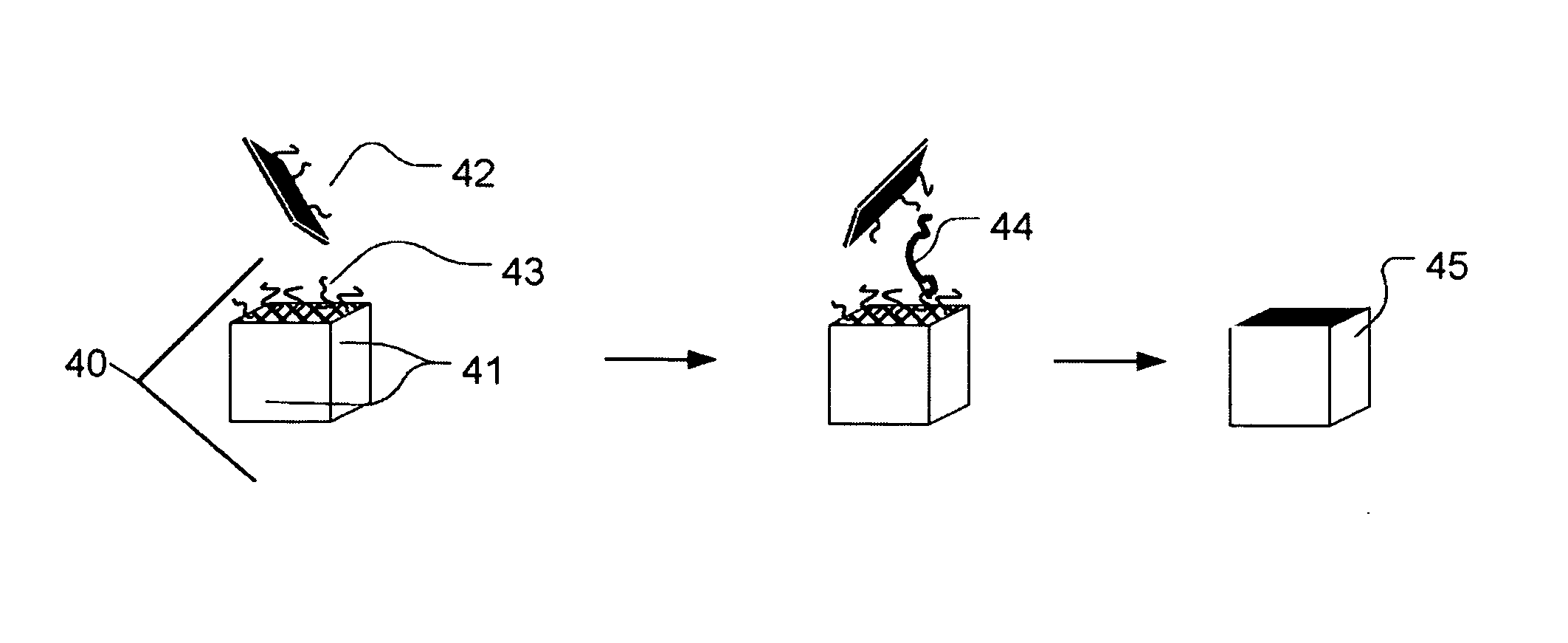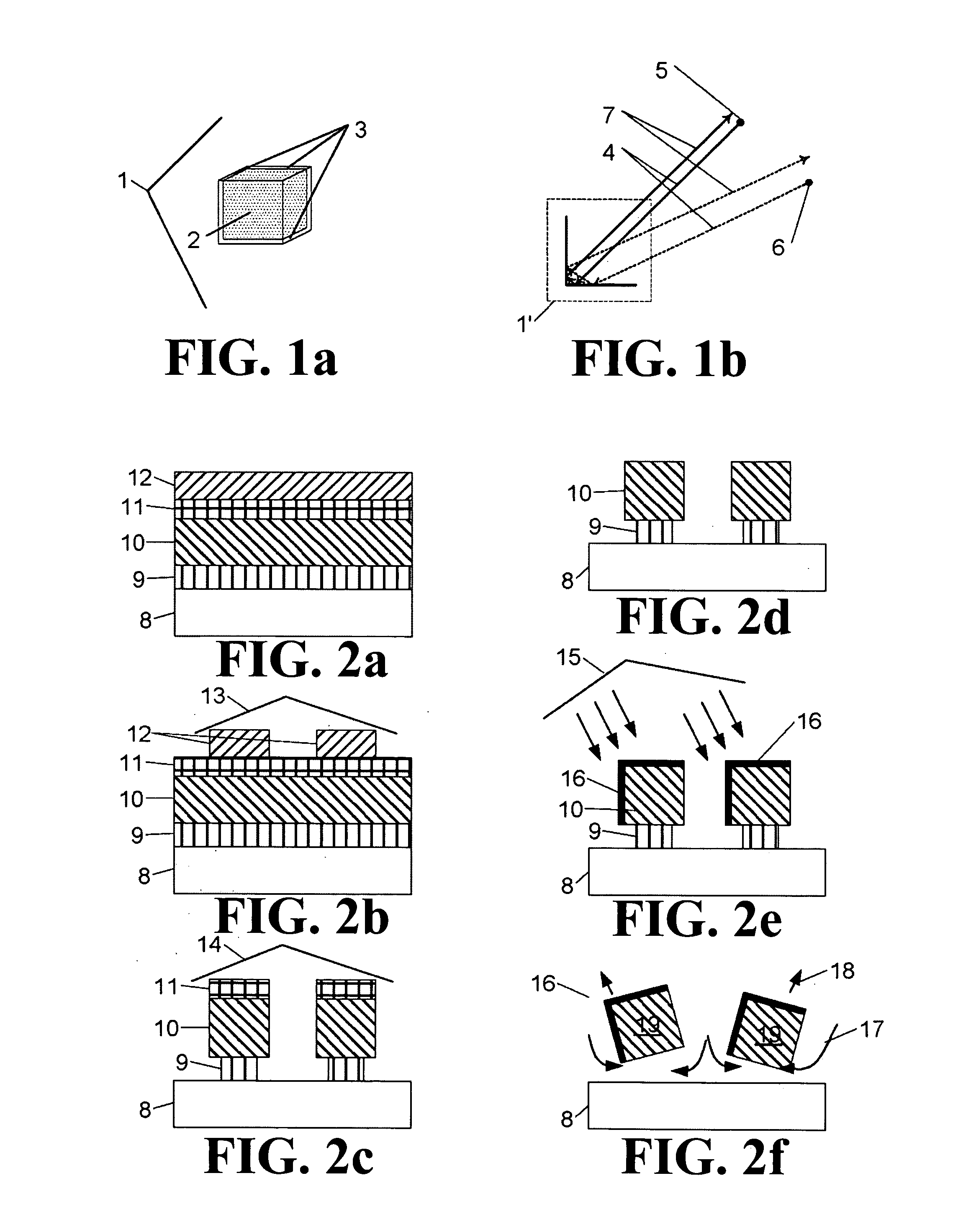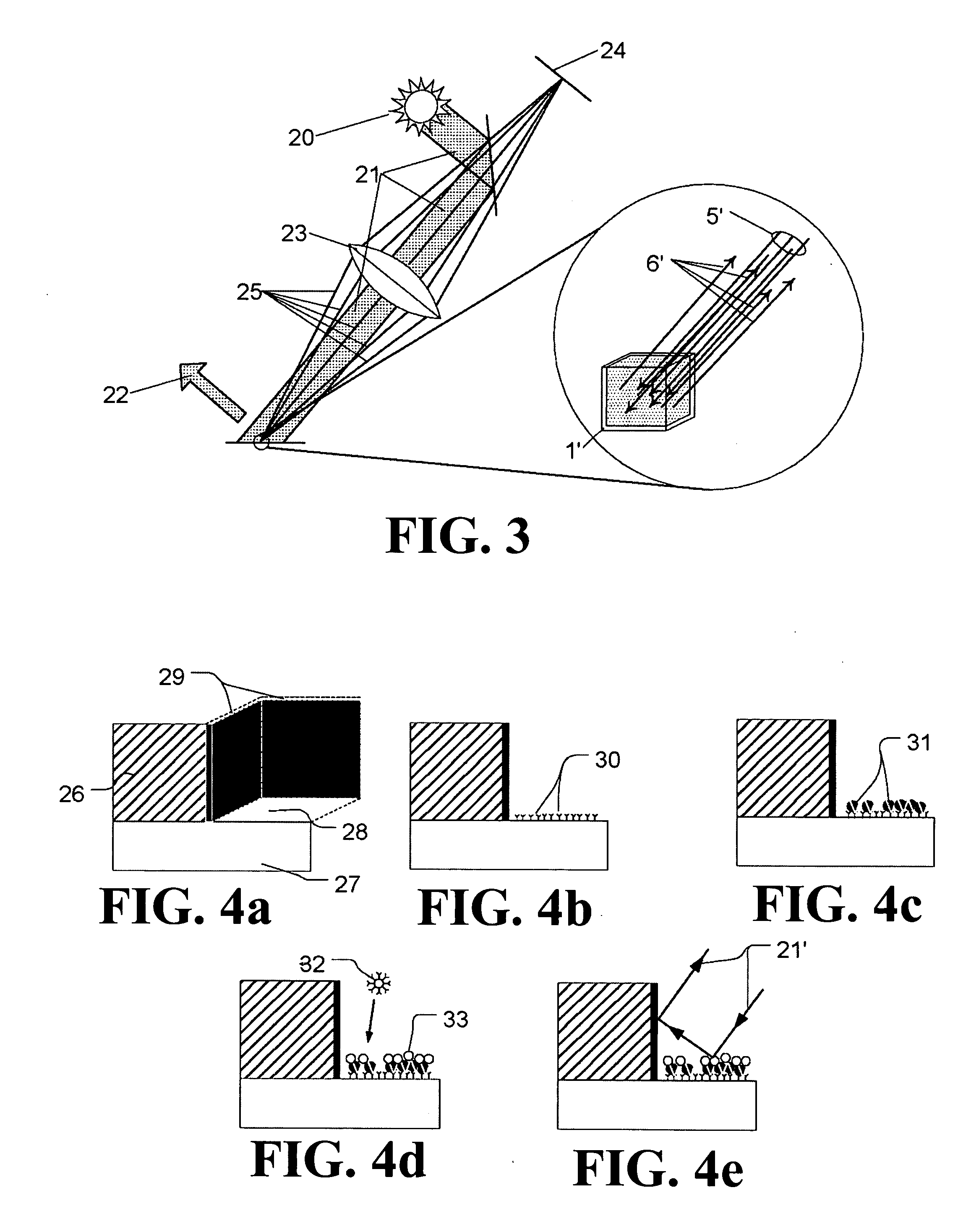Optical microlabels: shapes and reflectors
a technology of optical microlabels and reflectors, applied in the field of micron-scale labels, can solve the problems of poor storage stability, high cost, and insufficient background art for the use of micron-scale retroreflectors, and achieve the effect of superior detectability
- Summary
- Abstract
- Description
- Claims
- Application Information
AI Technical Summary
Benefits of technology
Problems solved by technology
Method used
Image
Examples
example 1
[0067]Corner-cube retroreflectors are produced according to the procedure of FIGS. 2a-2f, using gold as the reflective metal, and recombinant immunoglobulin-binding streptococcal Protein G is coupled to the gold surfaces of the retroreflectors using NHS-PEG-thiol. Recombinant Norwalk virus surface antigens are immobilized on a membrane surface, the membrane is blocked with nonfat dry milk, and saliva samples from persons suspected of having being infected with the Norwalk virus are blended with the Protein G-decorated retroreflector cubes and dot-blotted onto the membrane. After extensive washing, retroreflectance is measured at each spot using the optical configuration of FIG. 3. Elevated retroreflectance at the spot corresponding to a given sample suggests Norwalk exposure in the patient from whom the sample originated.
example 2
[0068]Subsequences of each of the known sequences of West Nile virus are determined, and sequences common to nearly all strains of the virus and not found in the human sequence or known SNPs are identified. Many-strain-characteristic complementary probe sequences are immobilized on a microscope slide, and hybridized with uman clinical samples. Positive hybridization is detected by addition of a mixture of second DNA probes recognizing various West Nile strains, each labeled with a different shape label.
example 3
[0069]Subsequences of each of the known sequences of Ebola virus are determined, and sequences common to nearly all strains of the virus and not found in the human sequence or known SNPs are identified. Two different many-strain-characteristic complementary probe sequences are immobilized on the two portions of a retroreflector, and added to nucleic acids isolated from a human clinical sample. The presence of Ebola virus is indicated by increase of retroreflection brightness above a predetermined threshold.
PUM
| Property | Measurement | Unit |
|---|---|---|
| thick | aaaaa | aaaaa |
| angle | aaaaa | aaaaa |
| thick | aaaaa | aaaaa |
Abstract
Description
Claims
Application Information
 Login to View More
Login to View More - R&D
- Intellectual Property
- Life Sciences
- Materials
- Tech Scout
- Unparalleled Data Quality
- Higher Quality Content
- 60% Fewer Hallucinations
Browse by: Latest US Patents, China's latest patents, Technical Efficacy Thesaurus, Application Domain, Technology Topic, Popular Technical Reports.
© 2025 PatSnap. All rights reserved.Legal|Privacy policy|Modern Slavery Act Transparency Statement|Sitemap|About US| Contact US: help@patsnap.com



